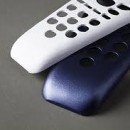Rapid Prototyping 3D Printing Process Explained
Okay, so a few people have emailed in to ask us about Rapid Prototyping so here is our Rapid Prototyping 3D Printing Process Explained post
You may have seen articles referring to “rapid prototyping”. But what is this and how does the process work? In this article we will look over the process, what is involved and how it could potentially benefit you.
History of Rapid 3D Printing Prototyping 3D Printing
Industrial 3D printers have existed since the 1980s. However it has only been recently that the technology has been developed to make it more widely available. This has meant that whereas it would take longer for people to develop prototypes for products now it is easier to do so and in a more efficient way. The first widely used process was known as stereolithography. In this process lasers solidified layers of UV sensitive polymer, forming them into various shapes. Over time a variety of other processes have been developed, allowing people to have more options to decide the most effective 3D printing process.
The Process of Rapid Prototyping 3D Printing
As stated above there are different types of 3D printing process. However the rapid prototype process is largely the same- a design is created by either a model or computer aided design program. After this the printing machine reads the data and creates the shape of the model by shaping the material (this could be liquid, metal, plastic or powder). Over time this shape is then completed from a number of layers. Finally the layers are joined together to form the final shape.
Benefits of Rapid Prototyping 3D Printing
The benefits of the rapid prototyping process depends on the kind of machinery you use but typically this process can be done in a few hours. This means you can produce more designs over the period of time it would normally take to do in one. Furthermore this means you get fewer recalls because it is easier to detect design flaws as the process is more accurate. In short as the name suggests rapid prototyping speeds up the process but it also makes it more efficient!













